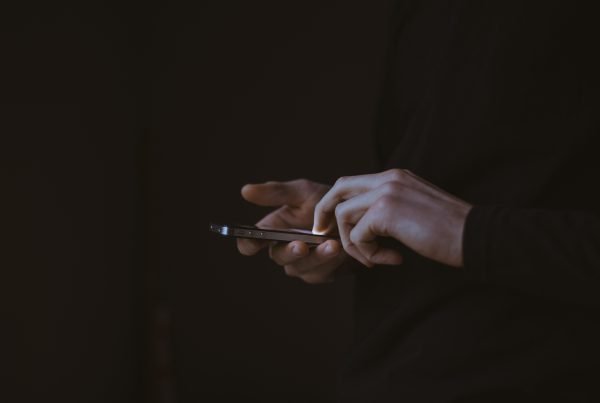As the global economy reopens and people start getting back to day-to-day life, there is still a need to take precautions to guard against more waves of COVID-19 infection. Unfortunately, it seems like coronavirus is no longer a temporary aberration but something that will become a normal part of our existence. As such, modifications across society are needed to cope with the reality of a post-COVID era.
Along with the economy, Universities will start reopening their doors for students. Starting in March, many schools and universities either canceled class or switched to a fully virtual learning environment. However, most universities and colleges have plans to resume in-person lessons this coming semester.
This leads to the natural question: What are schools doing to make sure that students are safe? Unfortunately, the proper pandemic protocol is not something that can be foisted on college students. As is probably well-known, trying to force young people to do something almost always has the opposite effect. Several recent videos of college-aged students partying and hanging out in large crowds have shown that schools might need to protect students from coronavirus—and also each other.
So it follows that universities need tools to manage proper pandemic conduct as in-person classes resume in the fall. The need is even higher given that many college students live in dorms where they are in close contact with one another. College students may also live in low-income neighborhoods, which are more likely to contain essential workers who are at a greater risk of developing the disease.
One major issue college administrators are sure to run into is enforcing social distancing and quarantine guidelines. College students are often on the move, going from class to class, dorm to dorm, and they come into contact with several people during the day. Continuous surveillance of students’ movements is not only unethical but highly infeasible as well. What is needed is a simple automated way to make sure students are maintaining an appropriate distance from one another.
Difficulties With Enforcing Social Distancing at Universities
Enforcing social distancing at universities has a few difficulties Most importantly, it is impossible to actively enforce social distancing rules on large campuses where so many students are going to and from classes. Moreover, it is hard to find consistent measures to punish students if they are congregating in large groups.
Some advocates have said they want to take the same approach to social distancing as they have for smoking on campus. According to the president of the Association of Student Conduct Administrators (ASCA) Marhta Compton “It’s sort of like any public health campaign we’ve had in the country. This is going to be a transition, it’s not going to be instantaneous.”
Other proposals are to add ‘failure to comply’ language to student agreements that can punish them for not abiding by school-wide social distancing measures. Although, most educators say that punitive measures are an absolute last resort.
Regardless of the solution, if it’s not rolled out in an efficient and comprehensive manner, students are much less likely to take to guidelines. The bottom line is that the success of public health depends heavily on the public perception of said programs. Simply put, if they are poorly received then they will be monumentally less effective.
As such, it seems like intrusive or punitive measures are the least effective way to enforce social distancing guidelines on college campuses. What is needed is a portable and scalable solution that can work more or less autonomously.
SafeTrack Wearable Devices for Social Distancing
That is where SafeTrack comes in. SafeTrack’s line of wearable devices is the perfect solution for COVID-management and response in universities and colleges. SafetTrack devices are highly customizable and can be scaled to whatever sized student population you have.
Here is how the tech works. Each student has a wearable sensor device that they keep on their person as they go about the day. As they move around the sensor creates a “sphere” around the person. If the sensor detects another device within range, it will create a gentle noise to let users know they are too close together. SafeTrack’s wearable devices can be programmed to have different effective radii and can have a notification on a timer.
Aside from basic proximity monitoring, SafeTrack devices can be used for contact tracing among the student population. SafeTrack’s wearable contact tracing solutions work similarly to the proximity monitoring tech. Students each have a wearable device. When two devices come into contact with one another, a ‘handshake’ is recorded and a key representing the contact is stored.
If a person is identified as infected, then public health officials can use the records to trace the contacts of the infected. SafeTrack devices are highly secure and send/receive all data anonymously. Students do not have to worry about privacy and they will not be notified of anyone else’s medical conditions. All notifications are sent anonymously and not in real-time.
SafeTrack devices can also be operated without any additional infrastructure. All SafeTrack devices are designed based on low-power wide-access networks (LPWANs). These kinds of networks are capable of sending and receiving packets of data across large distances with minimal resource consumption.
SafeTrack devices can run for days at a time on a single battery charge and can be configured in virtually any geographical setting. They are equally effective for urban dense locales and more spread out rural locations.
Conclusions
As schools begin planning for full reopenings in the fall, there is a distinct need for outbreak management protocols on campuses. Colleges and universities face unique problems with managing outbreaks. The close proximity and inherently social nature of college make traditional social distancing measures difficult.
SafeTrack digital solutions can bring peace of mind to educators and students as they return to college campuses in the fall. SafeTrack’s line of proximity monitors and wearable contact tracing devices can be an integral part of campus public health management.







